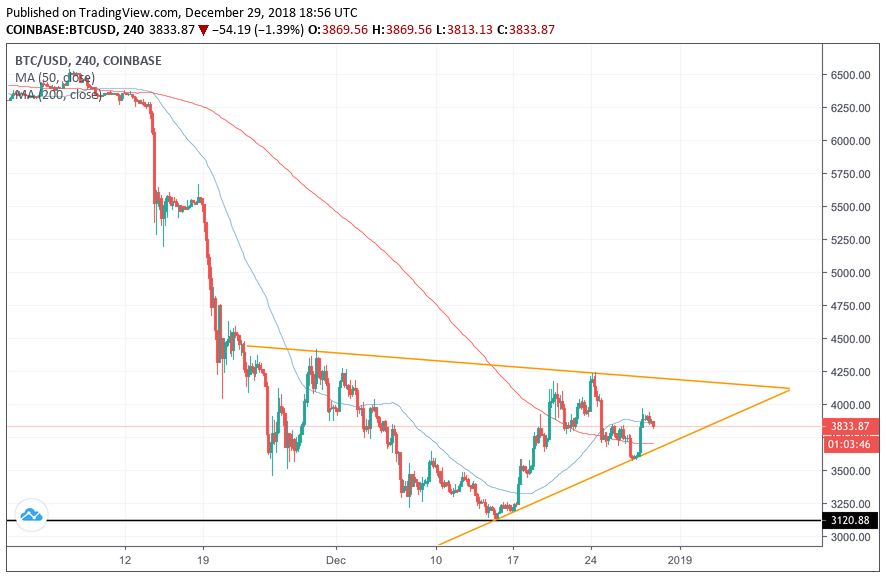The Bitcoin price has spent the first day of this weekend struggling to get through the $4,000 mark.
The digital currency attempted a bullish reversal on Friday, marking more than $300 worth of gains in just two hours. That hasn’t exactly changed any longer-term sentiments for the market, especially when it has dropped by more than 80% in 2018. But the intraday volatility has served plenty of opportunities to traders who wish to get in and out of the bitcoin market on decent profits.
The bitcoin price is now sitting at close to $3,834, down 3.45% from its Friday’s high, reflecting a consolidation pattern following a highly volatile period. The digital currency could continue its upside run, but a stronger resistance area around $4,237 would likely restrict the positive bias from flourishing. A drop from here would also meet the temporary bottom area above $3,000, thereby restricting bitcoin inside a strict $1,000-wide range (in the absence of a breakout scenario towards either direction).

Bitcoin finds itself trending between a downward and upward slope, which combinedly appears to be a descending channel pattern. The digital currency could continue to fluctuate between these known parameters before switching to a breakout scenario. The overall bearish bias confirms that bitcoin would continue its downtrend unless it establishes a double bottom first, followed by another breakdown action towards the next downside targets in $2,000-2,500 area.
Bullish in 2019?
The Bitcoin market is likely to establish a concrete bottom area around February, just around the time when the Securities and Exchange Commission will announce its judgment over the VanEck’s Bitcoin ETF. Thereon, the digital currency could pursue a consolidation action for the rest of the year while setting its upside target towards $6,000.
There are also some macroeconomic factors related to the US Dollar that may leave some imprints on the bitcoin market. Our analogy comes from a lower dollar demand, at least during the first half of the year, as investors factor in the possibilities of the US-China trade war resolve, slower economic growth, Fed quantitative tightening, government shutdown, Brexit, and also the dollar’s depreciating status of the global reserve.
“In an environment in which non-US growth expectations and risk appetite were broadly stable, and the outlook for US growth were to weaken, we should expect Dollar weakness primarily against G3 currencies,” said Karen Reichgott, an economist at Goldman Sachs in New York.
In 2017, a bearish dollar year, the value of Bitcoin jumped to its all-time high near $20,000.
Featured image from Shutterstock. Charts from TradingView.
Get Exclusive Crypto Analysis by Professional Traders and Investors on Hacked.com. Sign up now and get the first month for free. Click here.




